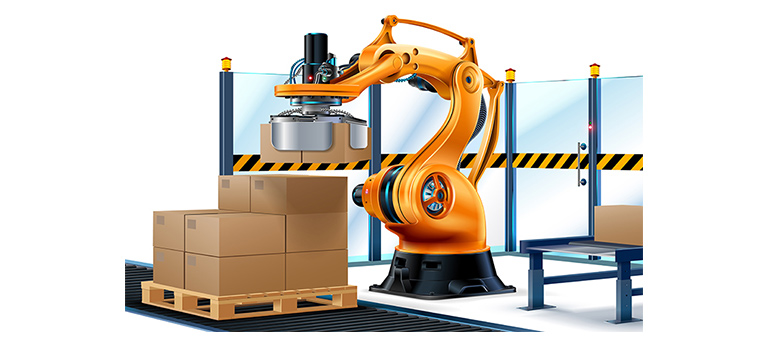The launch of Rizon robots by Flexiv and 3-finger adaptive robot gripper by Robotiq are examples of how pervasive adaptive robots have become in today’s world.
Robotics has seen tremendous growth in the past decade, coupled with artificial intelligence (AI) and machine learning (ML). However, we are years behind developing the self-aware sentient beings that attempt to overthrow the human race. Indeed, we have managed to overturn a significant hurdle towards reaching that goal, by successfully developing adaptive robots. These are specialized robots that can perceive their environment and adapt to it in real time. Such capabilities encourage them to autonomously make decisions, without the presence of direct human intervention. This might sound scary with the premise of a dystopian sci-fi story in mind. However, it i s significantly shaping up to revolutionize the industrial robotic sector.
A Brief History of Robotics
Adaptive robots are not just intelligent, but are also instrumental and interconnection based. Indeed, decisions are based on the information gathered from a vast IoT database, enabling such robots to sense and act on their environment. In comparison, conventional robots usually have position-controll, which means that they to move from one point to another. They lack the ability to control the force required to make the maneuver, thus, needing strict safety controls. The next-generation robot, dubbed the “collaborative robot”, introduced force detection and ushered in a new era of human-robot collaboration. Adaptive robots are the third generation robot. They have more technology that makes them adapt to their environment.
Rizon Paves the Way for Industrial Robots
Rizon is considered to be the world’s first adaptive robot that combines direct force control with advanced AI, ushering in a new generation of industrial robot. It is developed by Flexiv Ltd., a $22 million company founded at Stanford University. The adaptive robot has great tolerance in position variance. Additionally, the robot experiences high disturbance rejection, and intelligent transfer-ability for quick redeployment between similar product lines and tasks. Significantly, these are three distinctive traits that differentiate it from previous robots. Integrating force control with advanced AI allows such robots to have a sophisticated perception, force-guided manipulation, and flexible task planning with real-time adaptiveness. Notably, these qualities enable the robotic arm to work effectively in uncertain environments.
Flexiv Rizon achieves such a new dimension of adaptive robots by custom joint design. These robots also have self-developed control electronics, proprietary force sensing technology, and a hierarchical intelligence system. Additionally, the architecture of the hardware along with the torque-based control framework ensures industrial grade safety features. This helps ensure intrinsically safe interaction in uncertain environments. At the end of the day, Rizon performs a wide gamut of industrial tasks. These include polishing, precision insertion, assembling parts, force-based quality testing, etc. In fact, Co-founder and CEO of Flexiv, Shiquan Wang, states that, “Our robots are developed to have advanced manipulation skills to handle complex tasks in uncertain environments, which helps to provide flexible automation solutions for a wider range of tasks in different industries”.
Rizon Integrated With AI
Rizon utilizes AI-based computer vision with a depth camera, to sense and recognize objects, even in complex environments. It then uses this information to generate its own motion and task plans. An integrated AI learning system enables Rizon to not just learn individual tasks but actually combine them to perform more complex ones. As a result, this drastically shortens setup and programming time.
Through Rizon, Flexiv has paved the way for greater performance and broader scope of robotic tasks across multiple industries. Therefore, by integrating advanced AI to the second generation “collaborative robots”, which were already force controlled, Flexiv seeks to dominate with a robotic arm that is more flexible, adaptive, and intelligent across a broader task set than competing arms. As a result, this expands the market for where and how we use robots in industrial applications.
Robotiq Launches 3-Finger Adaptive Robot Gripper
Canadian based company Robotiq is one of the several key market players in the development of adaptive robots or robot parts. However, their recent product, a 3-finger adaptive robot gripper, has the unique ability to pick up any object of any shape or form. Therefore, the product is the best option for maximum versatility and flexibility. It enables the proprietor to focus on the task and not on the grasping, as it adapts to the object’s shape for a solid grip. Furthermore, it has four basic kind of grip types – pinch mode, wide mode, scissor mode, and basic mode – suited for objects of different shapes. Each finger has the capability to act independently and as an ensemble, gathering feedback from other fingers.
It can have myriad applications in the industry sector, from quality testing, machine tending, assembly line pick & place. In order to retain compatibility, the 3-finger gripper has plugs into most industrial robot manufacturers. Hence, first and second generation robots can now attach the 3-finger gripper to their arm and reap the adaptive benefits that it has to offer.
The Future of Adaptive Robots
According to many top robot manufacturers, adaptive robots have broken the ground in terms of being spatially aware at all times of its surroundings. The decision-making process, however, has plenty of scope to improve as AI keeps evolving at a tremendous pace. The advent of AI chips can also reduce the workload on these robots and facilitate interchangeability. This means that adaptive robots would not just adapt to their surroundings. Additionally, the robots would adapt to the AI present in their chip. An upcoming report by Allied Market research analyses the current state of the global adaptive robots market, mentioning the key market players. The report goes on to state the market is expected to grow significantly in the near future.
Tags: AI, Artificial Intelligence, Cybersecurity, Future of Tech, Global Market, Machine Learning, ML, Robotics, Robots, Technology


